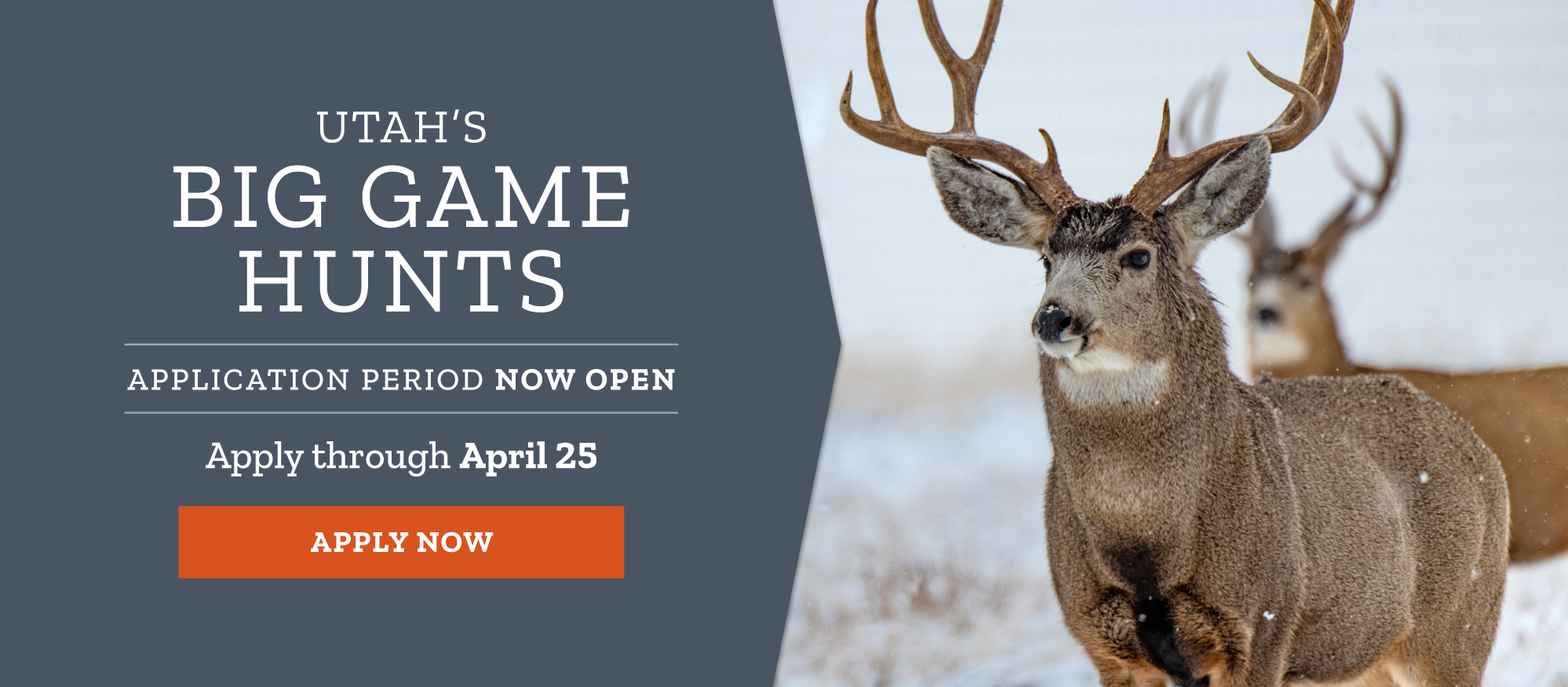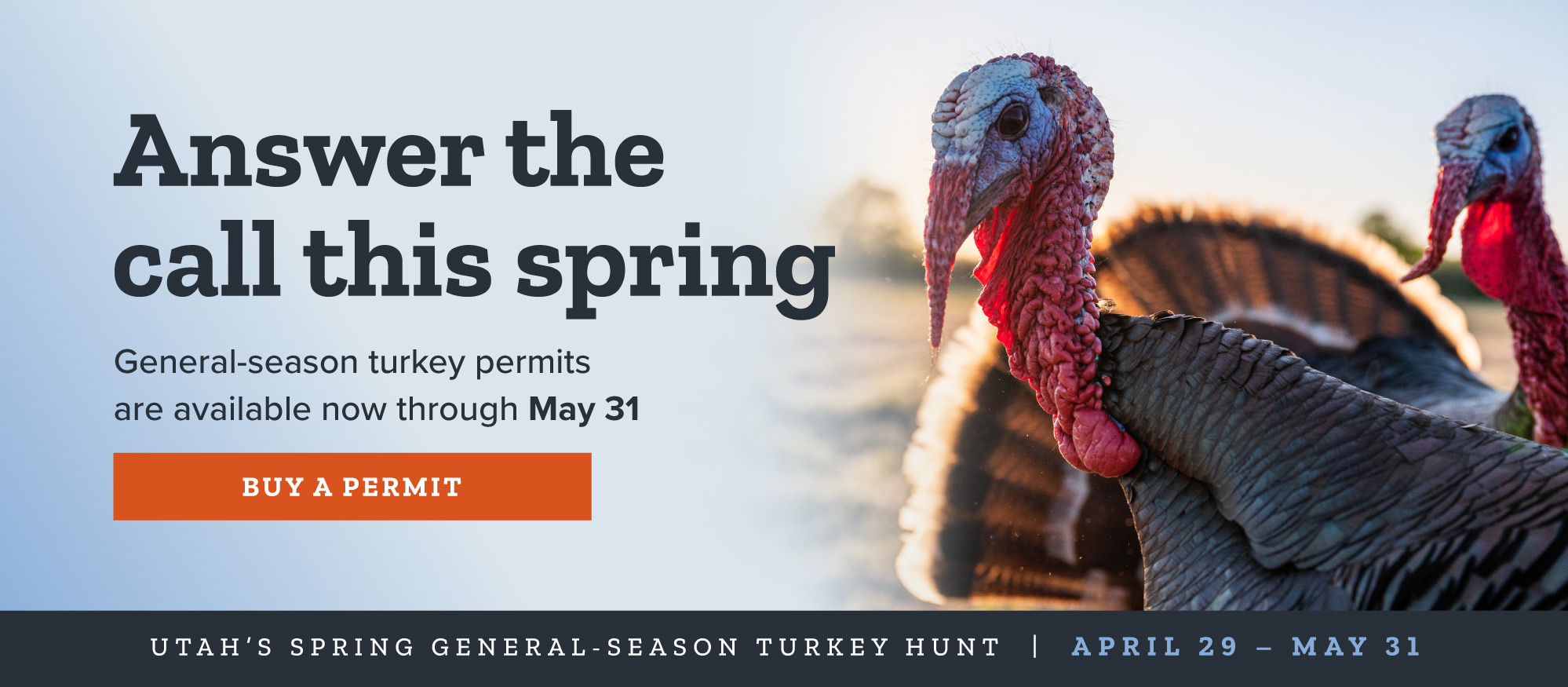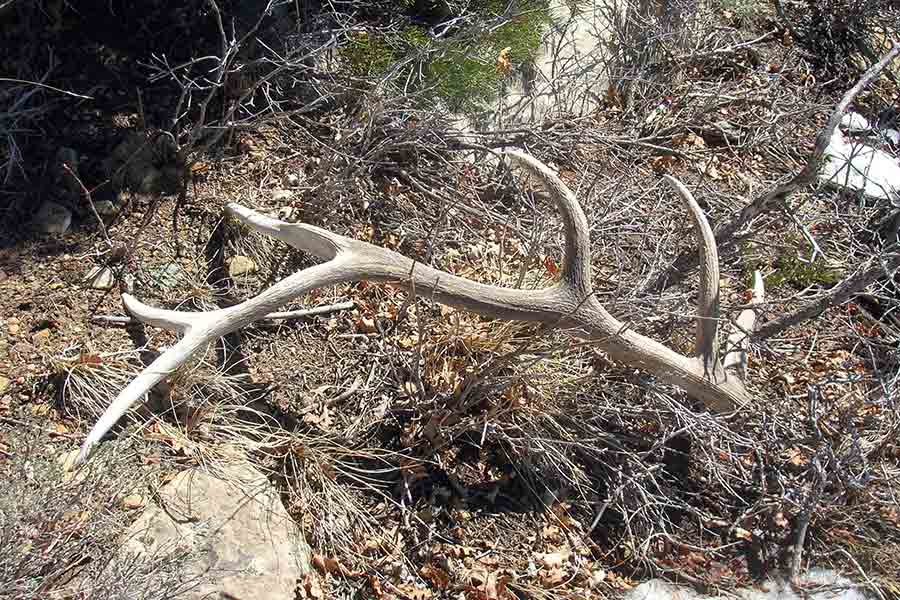Want to gather shed antlers? You must take an ethics course first
Salt Lake City — Collecting antlers that fall off the heads of deer, elk and moose each winter is a popular pastime in Utah. Before you head outdoors to collect shed antlers, though, please remember that you must complete the Utah Division of Wildlife Resources' Antler Gathering Ethics Course.
After their antlers drop off, male deer, elk and moose will start growing new ones this spring. Looking for the antlers they shed is a fun activity your whole family can enjoy. However, late winter and early spring is the toughest time of the year for deer, elk and moose. That's why the ethics course is required if you want to go "shed hunting" between Feb. 1 and April 15.
"During winter, big game animals, especially deer, often have a difficult time finding food," DWR Capt. Wyatt Bubak said. "If you spook an animal and cause it to run, the animal has to use up its fat reserves and the energy it needs to make it through the winter."
From late winter through early spring, the habitat that big game animals rely on is usually wet and easily damaged. Fortunately, you can gather shed antlers without stressing the animals or damaging their habitat. The free antler gathering ethics course will teach you how.
You can find the course on the DWR website. After you finish the course, you must print your certificate of completion and then carry it with you while you're gathering antlers.
Completing the course is mandatory if you want to gather shed antlers from Feb. 1 through April 15. If you wait until after April 15 to gather antlers, you don't need to complete the course.
After you’ve completed the course, you can gather antlers almost anywhere in Utah, except for the following areas:
- Wildlife management areas: Many of the state's wildlife management areas are closed in the winter and spring to protect animals and their habitat. Make sure to double check for any closures before entering a WMA to gather shed antlers.
- Private property: You must have written permission from the landowner before gathering antlers on private land. Otherwise, you risk getting a citation.
If you find a skull or dead animal with the antlers or horns still attached, it's possible the animal was poached. Do not pick up or move the skull or disturb footprints or other evidence at the scene. Instead, please do the following:
- Take photos of the skull from a couple of angles
- Pinpoint the location of the skull (preferably using GPS coordinates)
- Report your find to the nearest DWR office
- Provide specific details in your report
The DWR will send a conservation officer to investigate. If it's clear the animal died of natural causes, you might be allowed to keep your find.
For more information about gathering shed antlers in Utah, call the nearest DWR office.

















